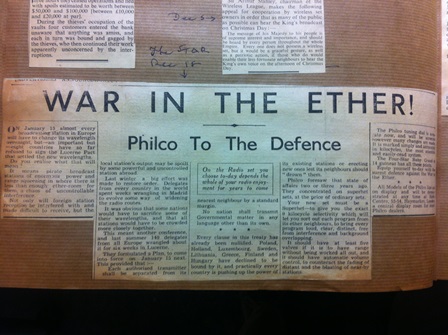from Jaume Navarro, Ikerbasque Research Professor, Universidad del País Vasco
hear Dr Navarro’s lecture on wireless and ‘the ether’, recorded Feb. 21 2014
In 1919, at the end of the Great War, Albert Einstein’s theory of general relativity received tremendous support after some epoch-making astronomical observations during a total solar eclipse. Einstein and his theory of relativity became the topic of serious discussions among physicists and philosophers as well as common currency in the wider cultural world. In this context, one of the heated discussions triggered by the new theory was on the existence of the ether.
What was the ether? Generally speaking, the ether was a loose concept that philosophers of all times had imagined as the medium through which interactions such as gravity and magnetism were transmitted. Nineteenth-century British physicists had turned this entity into an all-pervading mysterious medium essential to make sense of Maxwell’s theory of electromagnetism and light: because in this theory, any form of electromagnetic radiation, light included, was regarded as a wave; and if there was a vibration, there had to be something to vibrate. That was the ether at the turn of the century.
Einstein’s relativity and, to a lesser degree, the new quantum theory posed serious challenges to the notion of an ether. Continental physicists had never taken this entity too seriously, but scientists in the British tradition could not easily abandon the ether. For them, explaining natural phenomena involved imagining the hidden mechanisms of Nature and not simply finding valid equations to predict them; and, thus, the ether was essential to account for radiation and action at a distance.
In the 1920s, when theoretical developments, experimental results and international consensus forced the abandonment of the ether in theoretical science, even among the young generation of British physicists, a new and very popular technological development, spreading in every middle-class household, came to the rescue of the ether, at least for a while: wireless and radio broadcasting.
My research as a Marconi fellow at the Bodleian Library focuses on the life of the ether in the world of wireless after its death among theoretical physicists. Because, pace Einstein and his theory, ‘the ether’ remained as the medium through which wireless waves were transmitted from the sending station to the receiving apparatus. And with the rapid spread of broadcasting in the mid-1920s, the ether also became a battlefield between nations, broadcasting companies and wireless amateurs. This non-existent medium soon needed to be regulated, controlled and secured.


